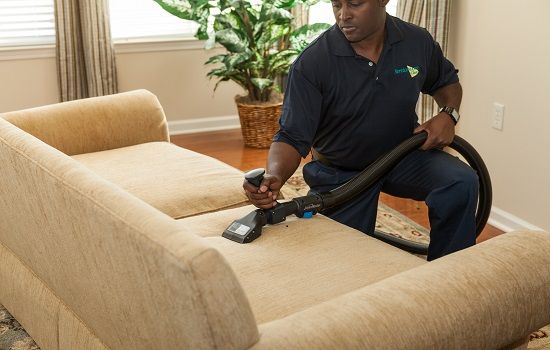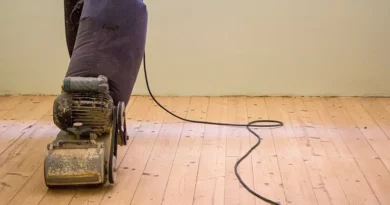The Ultimate Guide to Sofa Cleaning: How to Keep Your Sofa Fresh and Clean
Why Sofa Cleaning Is Important
Regular sofa cleaning is essential for several reasons. Not only does it keep your furniture looking pristine, but it also helps to maintain a healthier living environment. Here’s why it’s important to clean your sofa regularly:
- Removes Dust and Allergens
Sofas collect dust, dirt, pet dander, and other allergens that can contribute to poor indoor air quality. Regular sofa cleaning helps to remove these particles, improving the air you breathe. - Prevents Stains from Setting
Spills and stains are inevitable, but if they’re left untreated, they can set into the fabric or upholstery. Regular sofa cleaning prevents stains from becoming permanent and ensures that your furniture looks fresh. - Prolongs the Life of Your Sofa
Regular maintenance and cleaning help prevent wear and tear. By removing dirt and debris, you reduce the chances of fabric damage and maintain the structural integrity of your sofa. - Enhances the Aesthetic Appeal
A clean sofa enhances the overall appearance of your living room. It can make the space look more inviting and polished, ensuring your home is always guest-ready.
How to Clean Your Sofa: Step-by-Step Process
Now that we’ve established why sofa cleaning is necessary, let’s dive into the various methods you can use to clean your sofa effectively.
- Vacuum Your Sofa Thoroughly
Before you start any kind of sofa cleaning, you need to remove all loose dirt and debris. Start by using a vacuum cleaner with an upholstery attachment to clean the entire surface of your sofa. Pay attention to the crevices, seams, and underneath the cushions, as these areas tend to accumulate the most dirt. Regular vacuuming is crucial to maintain the cleanliness of your sofa and prevent dirt from settling deep into the fabric.
- Treat Stains Immediately
For fresh stains, prompt action is essential. Whether it’s coffee, wine, or food, sofa cleaning requires immediate intervention to prevent the stain from setting. Here’s how to treat common stains:
- For Liquid Stains: Blot the spill with a clean cloth or paper towel to absorb the liquid. Avoid rubbing, as this can push the stain deeper into the fabric.
- For Grease or Oil Stains: Sprinkle cornstarch or baking soda on the stain to absorb the oil. Let it sit for a few minutes, then vacuum it up.
- For Fabric Stains: Mix equal parts water and mild dish soap, and gently blot the stain using a cloth. Rinse with clean water and blot until the stain is gone.
- Use a Fabric Cleaner or Upholstery Shampoo
For a deeper clean, a fabric cleaner or upholstery shampoo is an excellent choice. Always check the care label of your sofa before applying any cleaning solution to ensure compatibility. Here’s a basic procedure for using a fabric cleaner:
- Apply the fabric cleaner to a small, inconspicuous area to test for colorfastness.
- Follow the manufacturer’s instructions on the product for best results.
- Use a soft brush or cloth to gently scrub the surface in circular motions.
- Let the product sit for the recommended amount of time, and then wipe off any excess cleaner with a clean cloth.
- Deep Clean with Steam
Steam cleaning is one of the most effective ways to deep clean your sofa without the use of harsh chemicals. A steam cleaner can reach deep into the fabric, loosening dirt and killing bacteria and dust mites. Here’s how to use steam for sofa cleaning:
- Set your steam cleaner to the appropriate setting for upholstery.
- Move the steam nozzle across the surface of your sofa, making sure not to saturate the fabric.
- Allow the fabric to dry completely after the steam treatment.
- Dry and Fluff the Upholstery
After your sofa cleaning process is complete, it’s crucial to let the sofa dry properly. Allow the upholstery to air dry, keeping it away from direct sunlight, which could cause the fabric to fade. To restore the texture of the fabric, gently fluff the cushions and fabric using your hands or a soft brush.
Special Tips for Different Types of Sofa Fabrics
Each type of sofa fabric requires a unique cleaning method. Below are the best cleaning practices for various materials:
Leather Sofas
Leather sofas require special attention during sofa cleaning to maintain their smooth texture and rich appearance. Use a soft, damp cloth to wipe down the surface, and avoid soaking the leather. Follow up by applying a leather conditioner to keep the material soft and prevent cracking.
Fabric Sofas
Fabric sofas are typically easier to clean, but they can absorb stains more quickly. Use a fabric-friendly cleaning solution and avoid using too much water to prevent mold and mildew buildup. For heavily soiled areas, consider using a professional upholstery cleaning service.
Microfiber Sofas
Microfiber is a popular sofa material due to its durability and stain resistance. For sofa cleaning, use a mixture of water and mild detergent, applying it with a soft cloth. Make sure to blot the surface and avoid over-saturating the fabric. A microfiber cleaning brush can also help restore the fabric’s appearance.
How Often Should You Clean Your Sofa?
The frequency of sofa cleaning depends on various factors, such as the type of material, how often the sofa is used, and the presence of pets or children. However, a general rule of thumb is to clean your sofa at least once every six months. If you have pets or small children, you may need to clean it more frequently.
Professional Sofa Cleaning: When to Call the Experts
While regular sofa cleaning is essential, sometimes your sofa may need a professional touch. Professional cleaners have the expertise and equipment to remove deeply embedded dirt, stains, and odors. If your sofa has significant wear, stubborn stains, or if you simply don’t have the time or inclination to clean it yourself, hiring a professional cleaner is a great option.
Conclusion
Regular sofa cleaning not only helps to maintain the beauty of your furniture but also contributes to a healthier living environment. By following the steps outlined in this guide, you can keep your sofa looking fresh, vibrant, and comfortable for years to come. Whether you prefer DIY methods or professional services, the key to effective sofa cleaning is consistency and attention to detail.




